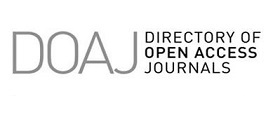Afectaciones antrópicas a las coberturas de bosques en la cuenca hidrográfica del caño Iracá, piedemonte llanero colombiano
DOI:
https://doi.org/10.30972/geo.22438105Palabras clave:
cuenca hidrográfica, caño, corredores boscosos, fragmentación, conectividadResumen
Entre agosto de 2023 y septiembre de 2024, se realizó un estudio en la cuenca del caño Iracá en el piedemonte llanero colombiano, para evaluar el estado actual de los bosques en función del régimen del uso del suelo. Durante este periodo se midieron dos variables críticas de impacto antrópico: la fragmentación y las pérdidas de conectividad de los corredores boscosos. El estudio se basó en registros fotográficos y recorridos en el terreno y en el posterior análisis geoespacial con imágenes LANDSAT para establecer los grados de fragmentación del bosque nativo.
Se encontró que los corredores boscosos han sufrido algún grado de fragmentación estructural dejando relictos que muestran una ordenación espacial insular. Se identificaron brechas, en algunos casos superiores a 1 kilómetro, que cortan la continuidad de los corredores boscosos, lo que afecta el flujo biótico de la fauna e impacta la red de pequeños tributarios comprometiendo la funcionalidad ecosistémica.
Citas
Alaniz, A. J., Smith-Ramírez, C., Rendón-Funes, A., Hidalgo-Corrotea, C., Carvajal, M. A., Vergara, P. M. & Fuentes, N. (2022). Multiscale spatial analysis of headwater vulnerability in South-Central Chile reveals a high threat due to deforestation and climate change. Science of The Total Environment, 849, 157930. https://doi.org/10.1016/j.scitotenv.2022.157930
Bega, J. M., Saltarelli, W. A., Gücker, B., Boëchat, I. G., Finkler, N. R. & Cunha, D. G. (2024). Effects of riparian vegetation restoration and environmental context on ecosystem functioning in tropical streams of southeastern Brazil. Science of The Total Environment, 948, 174906. https://doi.org/10.1016/j.scitotenv.2024.174906
Briceño -Vanegas, G. A. (2015). Evolución de la integridad estructural de ecosistemas lóticos del piedemonte llanero frente a la intervención antrópica. Acta Biológica Colombiana, 20(2), 133-144. http://dx.doi.org/10.15446/abc.v20n2.42307.
Briceño -Vanegas, G. A. (2023). Ecología, conceptos y aplicaciones para Latinoamérica. Alphaeditorial.
Briceño -Vanegas, G. A. y Gallego-Herrera, C. (2023). Ecological Functionality of Forest and Stream Corridors in an Area of the Plains Piedmont in Casanare. Acta Biológica Colombiana, 28(3), 475-485. https://doi.org/10.15446/abc.v28n3.99160
Cadol, D. & Wohl, E. (2010). Wood retention and transport in tropical, headwater streams, La Selva Biological Station, Costa Rica. Geomorphology, 123(1-2), 61-73. https://doi.org/10.1016/j.geomorph.2010.06.015
Castiblanco, C., Etter, A. & Ramirez, A. (2015). Impacts of oil palm expansion in Colombia: What do socioeconomic indicators show? Land Use Policy, 44, 31-43. https://doi.org/10.1016/j.landusepol.2014.10.007
Forman, R. T. T. and Baudry, J. (1984). Hedgerows and hedgerow networks in landscape ecology. Environmental management, (8), 495-510. https://doi.org/10.1007/BF01871575
Forman, R. T. T. (1995). Land Mosaics. The ecology of landscapes and regions. Cambridge University Press. https://doi.org/10.1017/9781107050327.
Gonçalves Jr, J. F. & Callisto, M. (2013). Organic-matter dynamics in the riparian zone of a tropical headwater stream in Southern Brasil. Aquatic Botany, 109, 8-13. https://doi.org/10.1016/j.aquabot.2013.03.005
González - González, A., Villegas, J. C., Clerici, N. & Salazar, J. F. (2021). Spatial-temporal dynamics of deforestation and its drivers indicate need for locally-adapted environmental governance in Colombia. Ecological Indicators, 126, 107695. https://doi.org/10.1016/j.ecolind.2021.107695
Google Earth (s.f.). [Imagen LANDSAT 8 del piedemonte llanero del Departamento del Meta, Colombia]. Recuperado 14 de septiembre de 2023, de https://www.google.com/earth/versions/#earth-pro
Instituto Geográfico Agustín Codazzi [IGAC]. (2021). Cartografía base de Colombia. https://geoportal.igac.gov.co
MacArthur, R. H. y Wilson, E. O. (1967). The theory of Island Biogeography. Princeton University Press.
Mwalyosi, R. B. (1991). Ecological evaluation for wildlife corridor and buffer zones for lake Manyara National Park, Tanzania and its inmediate environment. Biological Conservation, 57(2), 171-186. https://doi.org/10.1016/0006-3207(91)90137-X
Noss, R. (1993). Wildlife corridors. En D. S. Smith and P. C. Hellmund (Eds.), Ecology of Greenways: Design and Function of Linear Conservation Areas. University of Minnesota Press.
Pineda - Zapata, S., González-Ávila, S., Armenteras, D., González-Delgado, T. M. & Morán-Ordoñez, A. (2024). Mapping the way: identifying priority potential corridors for protected areas connectivity in Colombia. Perspectives in Ecology and Conservation, 22(2), 156-166. https://doi.org/10.1016/j.pecon.2024.02.003
Prescott, G. W., Gilroy, J. J., Haugaasen, T., Uribe, C. A. M., Foster, W. A. & Edwards, D. P. (2016). Reducing the impacts of Neotropical oil palm development on functional diversity. Biological Conservation, 197, 139-145. https://doi.org/10.1016/j.biocon.2016.02.013
Romero-Ruiz, M. H., Flantua, S. G. A., Tansey, K. & Berrio, J. C. (2012). Landscape transformations in savannas of northern South America: Land use/cover changes since 1987 in the Llanos Orientales of Colombia. Applied Geography, 32(2), 766-776. https://doi.org/10.1016/j.apgeog.2011.08.010
Spackman, S. C. and Hughes, J. W. (1995). Assessment of minimum stream corridor width for biological conservation: species richness and distribution along mid order streams in Vermont, USA. Bioligical Conservation, 71(3), 325-332. https://doi.org/10.1016/0006-3207(94)00055-U
Van Ausdal, S. (2009). Pasture, proft, and power: an environmental history of cattle ranching in colombia, 1850-1950. Historia Crítica, (39), 126-149. http://www.scielo.org.co/scielo.php?script=sci_arttext&pid=S0121-16172009000400008
Zimbresa, B., Machadoa, R. & Peres, C. (2018). Anthropogenic drivers of headwater and riparian forest loss and degradation in a highly fragmented southern Amazonian landscape. Land Use Policy, 72, 354-363. https://doi.org/10.1016/j.landusepol.2017.12.062
Publicado
Versiones
- 2025-10-27 (2)
- 2025-05-13 (1)
Cómo citar
Número
Sección
Licencia
Derechos de autor 2025 Geográfica digital

Esta obra está bajo una licencia internacional Creative Commons Atribución-NoComercial 4.0.


















